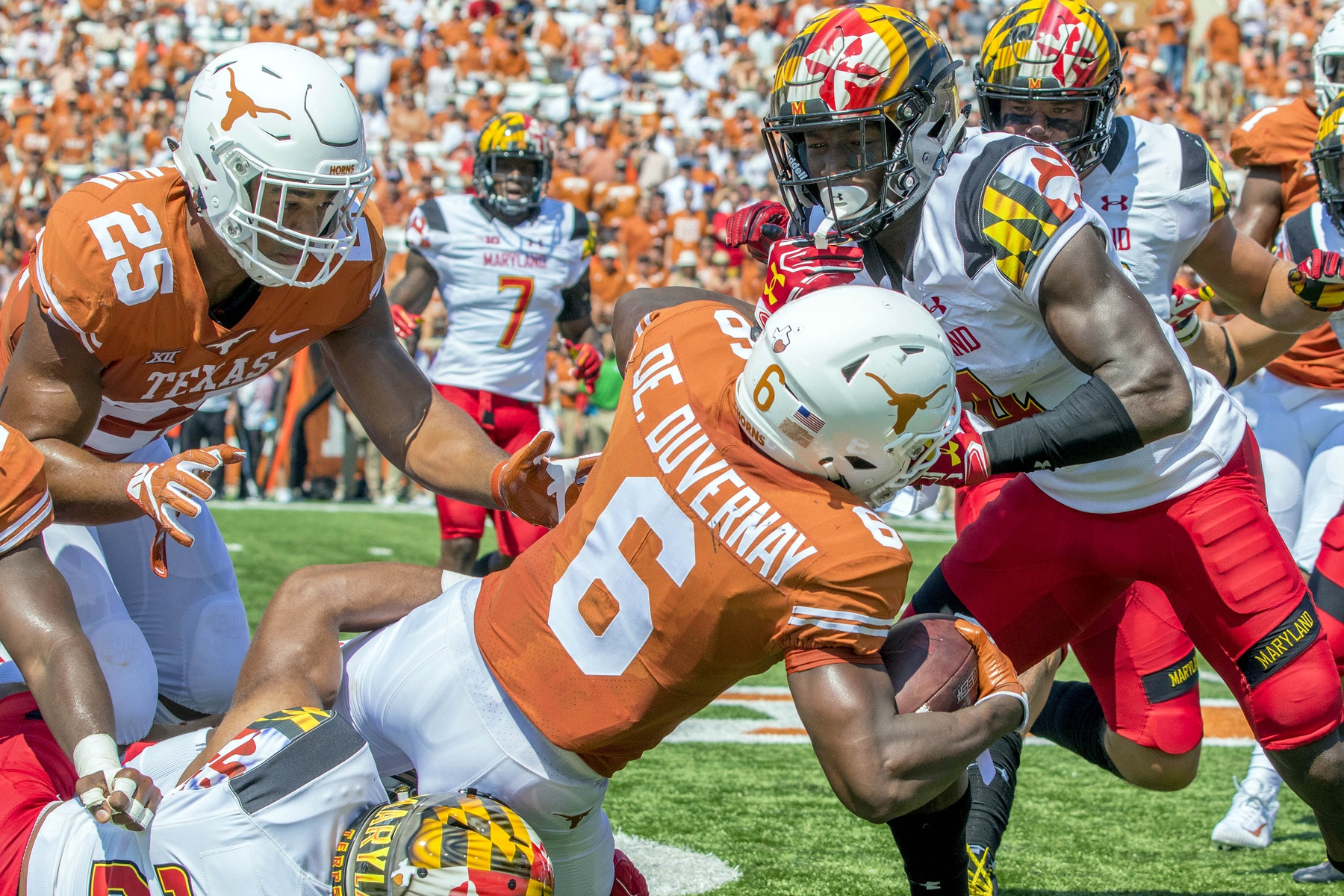Ad Disclosure

Ranking the B1G’s 2018 non-conference schedules from weakest to toughest
I have a method to my madness.
Non-conference play can be a tricky thing to project, even as it’s happening. It’s early in the season, and a lot of times, teams are still figuring out their strengths and weaknesses.
Last year, we saw Maryland truck Texas in Austin in a game that few people probably thought the Terps would pull out. We also saw what looked like an impressive win vs. Florida in Dallas turn out to be not so impressive for Michigan.
So this year, I used the scoring system that I used last year to try and figure out which B1G teams had the toughest non-conference schedules. It’s the best way to combine last year’s achievements with this year’s projections.
Here’s how I break it down:
- 10 for non-bowl, non-P5 team
- 20 for non-bowl, P5 team (BYU, Cincinnati, Notre Dame count)
- 30 for bowl team
- 40 for preseason 11-25 (ESPN)
- 50 for preseason 1-10 (ESPN)
- +5 for neutral site
- +10 for road game
Is it a perfect system? No. Technically, there’s only a 5-point difference for Indiana traveling to face FIU compared to Ohio State facing TCU on a neutral site in Texas. And to consider a home game against Mizzou and Drew Lock the same as a home game against Akron might seem a bit unfair. It probably is.
But is this the best way to take subjectivity out of it and not let brands or preseason hype factor into the equation? In my opinion, it is.
This is what my equation turned out:
14. Rutgers (40)
- Texas State (10)
- at Kansas (20)
- Buffalo (10)
13. Illinois (55)
- Kent State (10)
- Western Illinois (10)
- USF* (35)
12. Wisconsin (60)
- Western Kentucky (30)
- New Mexico (10)
- BYU (20)
T8. Iowa (70)
- Northern Illinois (30)
- Iowa State (30)
- Northern Iowa (10)
T8. Minnesota (70)
- New Mexico State (30)
- Fresno State (30)
- Miami OH (10)
T8. Penn State (70)
- Appalachian State (30)
- at Pitt (30)
- Kent State (10)
T8. Purdue (70)
- Eastern Michigan (10)
- Mizzou (30)
- Boston College (30)
7. Ohio State (75)
- Oregon State (20)
- TCU* (45)
- Tulane (10)
T5. Indiana (80)
- at FIU (40)
- Virginia (30)
- Ball State (10)
T5. Nebraska (80)
- Akron (30)
- Colorado (20)
- Troy (30)
4. Michigan (90)
- at Notre Dame (50)
- Western Michigan (10)
- SMU (30)
3. Maryland (95)
- Texas* (45)
- at Bowling Green (20)
- Temple (30)
T1. Michigan State (100)
- Utah State (30)
- at Arizona State (40)
- Central Michigan (30)
T1. Northwestern (100)
- Duke (30)
- Akron (30)
- Notre Dame (40)
Some context on that
Northwestern and Michigan State are the only B1G teams who have to face three bowl teams in non-conference play. As a result, that’s why they winded up tied for No. 1 on this list.
Michigan probably should’ve had the toughest non-conference schedule because Western Michigan actually won six games last year. It just didn’t earn a bowl berth. Had Western Michigan received those 30 bowl points instead of the 10 it got for being a non-bowl, non-Power 5 home game, Michigan would’ve had a total score of 110 instead of 90.
I’d also argue that Michigan has the B1G’s toughest individual matchup having to travel to Notre Dame. Not only does Notre Dame have the highest ESPN preseason ranking of any B1G non-conference opponent (12), it also returns the highest percentage of its defensive production of anyone in the country. That’s from a unit that ranked No. 31 in scoring defense last year.
It’s probably worth noting that the aforementioned FIU boost for Indiana skewed its ranking a bit. Do I think the Hoosiers have a tougher non-conference schedule than Purdue? Absolutely not. The Boilermakers have to face two Power 5 teams that played in bowl games last year while Indiana has one, and it’s a Virginia team who many felt overachieved en route to six wins last year. Purdue’s schedule is comparable to its 2017 non-conference slate, when it was ranked No. 1 by my scoring system.
Also, that’s probably too high of a spot for Nebraska. I’d certainly slot the Huskers, who don’t have to face any Power 5 bowl teams, behind the Boilermakers.
And one last thing. I apologize if I’m beating a dead horse, but my goodness that Wisconsin slate is horrendous. Western Kentucky got the 30 points only because it won a triple-overtime game in late November to become bowl eligible last year. And while BYU is still considered a Power 5 requirement by the B1G, it was outscored 102-16 in the three games it actually faced P5 competition last year (including that 40-6 beatdown by Wisconsin in Provo).
That’s my way of saying that the Badgers EASILY could’ve wound up with the minimum of 30 points instead of 60.
Oh well. Once again, the system isn’t perfect but it takes subjectivity out of the ranking.
I’ll take pride in knowing that at least it recognized that when a team’s marquee non-conference game is at Kansas, it’s going to be ranked dead last.
Connor O'Gara is the senior national columnist for Saturday Tradition. He's a member of the Football Writers Association of America. After spending his entire life living in B1G country, he moved to the South in 2015.